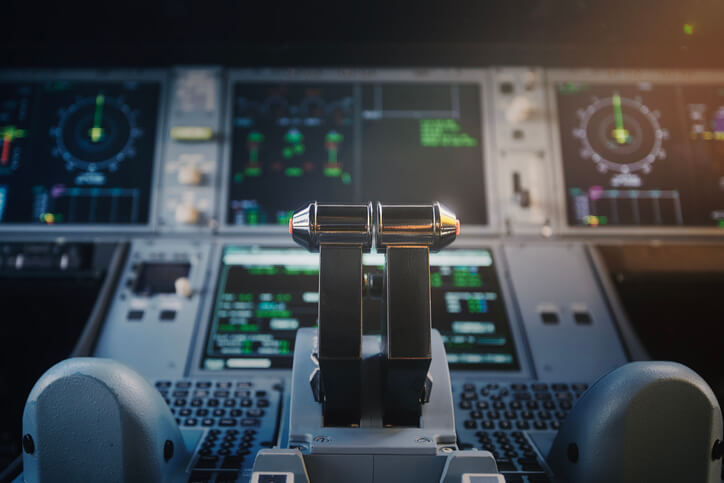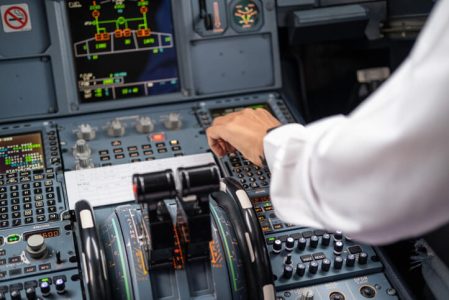FAA Offers New Flight Planning Clearance Guidelines
In the past, flight planning and obtaining clearance was a cumbersome process that often led to delays, especially at busy airports. Pilots would spend precious time trying to communicate with ATC on the radio, often facing interruptions and misunderstandings. But then controller-pilot datalink communications (CPDLC) came along, revolutionizing the way clearances were obtained.
One of the greatest advantages of CPDLC was the improved clarity and instructions received. No longer did pilots have to ask ATC to repeat unclear information or struggle with their flight management system (FMS) recognizing input data. Everything became more streamlined and efficient.
To further ensure the proper loading and adherence to clearances, the Federal Aviation Administration (FAA) has recently issued Safety Alert for Pilots (SAFO) 23005. The FAA is not only concerned with the accurate loading of flight plans into the FMS but also with their proper execution.
It has come to their attention that many pilots have misinterpreted clearance codes, resulting in them proceeding to the wrong fix without confirmation from ATC. The FAA acknowledges the potential confusion and emphasizes that if pilots receive a UM79 partial reroute message, they must manually enter the standard instrument departure (SID) into their FMS every time.
Failure to do so has led to instances where pilots have been directed by their FMS to proceed directly to a waypoint in a UM79 clearance, which is incorrect. The correct clearance to follow would have been UM74. Concerningly, in 2022, there were 20 aircraft deviations at Teterboro (TEB), potentially caused by this CPDLC and UM79 issue. These aircraft mistakenly flew into Newark International’s arrival corridor, necessitating urgent traffic avoidance instructions from New York controllers. This situation poses significant risks to flight safety.
In response, the FAA has mandated that the SID clearance must be manually reloaded into the FMS after receiving a UM79 alert. The TEB tower has even incorporated a warning into its digital ATIS message to raise awareness. However, it is crucial for all pilots utilizing this technology to be well-informed of the correct procedure. Whenever receiving a UM79 flight plan revision, manually reloading the FMS is essential.

Obtaining and Adhering to Flight Plan Clearances
There are numerous reasons why it is critical for pilots to file and follow their approved flight plan clearances, including:
- Enhanced Safety: A flight plan clearance provides a roadmap for the journey, detailing the aircraft’s path, altitude, and speed. This helps pilots avoid collision with other flights, high terrains, and restricted zones. It also ensures that the aircraft has enough fuel for the journey, thus avoiding emergency situations.
- Effective Communication with ATC: Flight plan clearance facilitates communication between the pilot and the Air Traffic Control (ATC). The ATC uses this plan to track the aircraft throughout its journey, provide updates on weather conditions, and guide the pilot in case of unexpected situations. Ignoring or not following the clearance can lead to misunderstandings, potentially resulting in dangerous situations.
- Emergency Preparedness: In case of an emergency, such as an unscheduled landing or mechanical failure, a flight plan clearance allows rescue services to locate the aircraft quickly, potentially saving lives. It includes details of the planned route, making it easier to narrow down the search area.
- Efficient Use of Airspace: Adhering to a flight plan clearance helps manage air traffic efficiently, reducing the risk of congestion and ensuring smooth takeoffs and landings. It also allows for better coordination between different flights, minimizing the chances of mid-air collisions.
- Adaptability to Weather Conditions: Flight plan clearance considers the current and forecasted weather conditions. This allows pilots to adjust their routes or altitudes to avoid severe weather, thus ensuring a safe and comfortable flight for passengers and crew.
Enhancements in clearance technology have made aviation communication simpler and more efficient. By following the proper procedures and staying informed, pilots can ensure a safer and smoother flying experience for themselves, and everyone involved. Let’s embrace these advancements and prioritize aviation safety.










